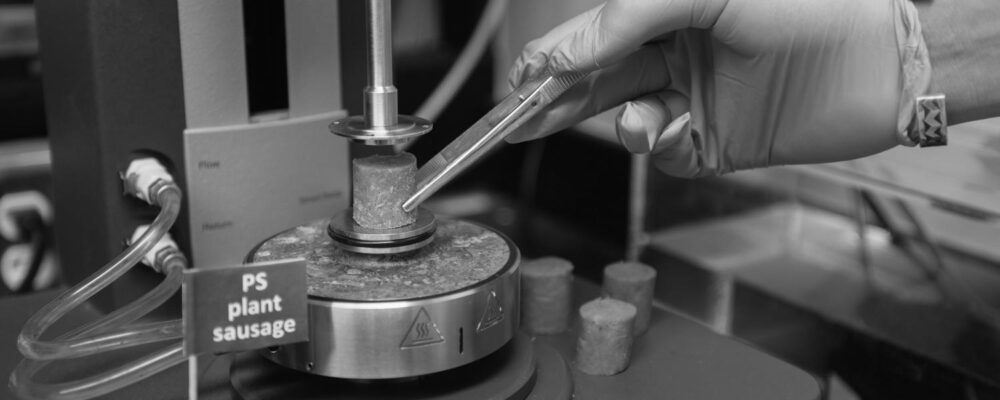A basic function of cells is that they act in response to their environments. It makes sense, then, that a goal of scientists is to control that process, making cells respond how they want to what they want.
One avenue for this ambition is cell receptors, which function like ignition slots on a cell, requiring keys – such as specific hormones, drugs, or antigens – to start up specific cellular activities. There are already synthetic receptors that give us some control over this sequence of events, most famously the chimeric antigen receptors used in CAR-T cell cancer therapy. But existing synthetic receptors are limited in the variety of keys they can accept and the activities they can trigger.
This innovation, called “Programmable Antigen-gated G protein-coupled Engineered Receptors” (PAGER), is built around G protein-coupled receptors, a set of over 800 proteins in the human body that turn on molecular switches inside the cell, called G-proteins, to control many vital functions. The researchers demonstrated PAGER’s versatility by successfully controlling neuronal activity, triggering immune responses, and delivering therapeutic treatments in lab experiments.
“I think PAGER has potential for impact, both in the G protein coupled receptor biology field, and in synthetic circuits or cell-based therapies,” said Alice Ting, professor of genetics at the School of Medicine and of biology in the School of Humanities and Sciences and senior author of the paper. “When you put a technology out there, it’s always exciting to see all the creative ways that people use and transform the technology in ways that you never even imagined. There’s so much more that’s possible.”
While G-protein coupled receptors can activate various cellular activities, researchers had previously avoided them for programmable applications because customizing their “keys” was challenging, literally requiring researchers to direct the evolution of the receptors for years to create just one desired option.
“G-protein coupled receptors, normally, can be activated by specific small molecules that bind in a pocket in the receptor,” explained Nicholas Kalogriopoulos, a postdoctoral fellow in the Ting lab and co-lead author of the paper. “Essentially, what we did is fuse something that blocks that pocket, and it only opens up when it binds something you’ve chosen.”
“,”additional”:{“file_info”:{“file_name”:”Schematic2.jpg”,”size_readable”:”184.5 KB”,”size_bytes”:188878,”width”:1778,”height”:1000,”modified_readable”:”Dec 3, 2024 10:30 AM”,”modified_unix”:1733250605},”varieties”:[{“id”:”162697:v1″,”type”:”image_variety”,”type_name”:”Image Variety”,”version”:””,”name”:”100w”,”short_name”:”100w”,”status”:{“id”:16,”code”:”live”,”name”:”Live”},”created”:{“date”:”1969-12-31T16:00:00-08:00″,”user_id”:null},”updated”:{“date”:”1969-12-31T16:00:00-08:00″,”user_id”:null},”published”:{“date”:null,”user_id”:null},”status_changed”:{“date”:”1969-12-31T16:00:00-08:00″,”user_id”:null},”urls”:[“https://news.stanford.edu/__data/assets/image/0031/162697/varieties/100w.jpg”],”url”:”https://news.stanford.edu/__data/assets/image/0031/162697/varieties/100w.jpg”,”attributes”:{“variety_type”:”resize”,”filename”:”100w.jpg”,”name”:”100w”,”title”:”schematic”,”caption”:”Image credit: Nicholas Kalogriopoulos, Reika Tei, Alice Ting”,”variety_size”:3577,”variety_height”:100,”variety_width”:100,”alt”:”Schematic that shows how PAGER adds extra controls to G protein-coupled receptors. “,”dimension_min”:0,”dimension”:100,”height”:0,”width”:0,”constrain”:”centre_weighted_square”},”metadata”:null,”contents”:””,”additional”:{}},{“id”:”162697:v2″,”type”:”image_variety”,”type_name”:”Image Variety”,”version”:””,”name”:”150w”,”short_name”:”150w”,”status”:{“id”:16,”code”:”live”,”name”:”Live”},”created”:{“date”:”1969-12-31T16:00:00-08:00″,”user_id”:null},”updated”:{“date”:”1969-12-31T16:00:00-08:00″,”user_id”:null},”published”:{“date”:null,”user_id”:null},”status_changed”:{“date”:”1969-12-31T16:00:00-08:00″,”user_id”:null},”urls”:[“https://news.stanford.edu/__data/assets/image/0031/162697/varieties/150w.jpg”],”url”:”https://news.stanford.edu/__data/assets/image/0031/162697/varieties/150w.jpg”,”attributes”:{“variety_type”:”resize”,”filename”:”150w.jpg”,”name”:”150w”,”title”:”schematic”,”caption”:”Image credit: Nicholas Kalogriopoulos, Reika Tei, Alice Ting”,”variety_size”:6142,”variety_height”:150,”variety_width”:150,”alt”:”Schematic that shows how PAGER adds extra controls to G protein-coupled receptors. “,”dimension_min”:0,”dimension”:150,”height”:0,”width”:0,”constrain”:”centre_weighted_square”},”metadata”:null,”contents”:””,”additional”:{}},{“id”:”162697:v3″,”type”:”image_variety”,”type_name”:”Image Variety”,”version”:””,”name”:”200w”,”short_name”:”200w”,”status”:{“id”:16,”code”:”live”,”name”:”Live”},”created”:{“date”:”1969-12-31T16:00:00-08:00″,”user_id”:null},”updated”:{“date”:”1969-12-31T16:00:00-08:00″,”user_id”:null},”published”:{“date”:null,”user_id”:null},”status_changed”:{“date”:”1969-12-31T16:00:00-08:00″,”user_id”:null},”urls”:[“https://news.stanford.edu/__data/assets/image/0031/162697/varieties/200w.jpg”],”url”:”https://news.stanford.edu/__data/assets/image/0031/162697/varieties/200w.jpg”,”attributes”:{“variety_type”:”resize”,”filename”:”200w.jpg”,”name”:”200w”,”title”:”schematic”,”caption”:”Image credit: Nicholas Kalogriopoulos, Reika Tei, Alice Ting”,”variety_size”:4575,”variety_height”:112,”variety_width”:200,”alt”:”Schematic that shows how PAGER adds extra controls to G protein-coupled receptors. “,”dimension_min”:0,”dimension”:0,”height”:200,”width”:200,”constrain”:”width”},”metadata”:null,”contents”:””,”additional”:{}},{“id”:”162697:v4″,”type”:”image_variety”,”type_name”:”Image Variety”,”version”:””,”name”:”300w”,”short_name”:”300w”,”status”:{“id”:16,”code”:”live”,”name”:”Live”},”created”:{“date”:”1969-12-31T16:00:00-08:00″,”user_id”:null},”updated”:{“date”:”1969-12-31T16:00:00-08:00″,”user_id”:null},”published”:{“date”:null,”user_id”:null},”status_changed”:{“date”:”1969-12-31T16:00:00-08:00″,”user_id”:null},”urls”:[“https://news.stanford.edu/__data/assets/image/0031/162697/varieties/300w.jpg”],”url”:”https://news.stanford.edu/__data/assets/image/0031/162697/varieties/300w.jpg”,”attributes”:{“variety_type”:”resize”,”filename”:”300w.jpg”,”name”:”300w”,”title”:”schematic”,”caption”:”Image credit: Nicholas Kalogriopoulos, Reika Tei, Alice Ting”,”variety_size”:4575,”variety_height”:112,”variety_width”:200,”alt”:”Schematic that shows how PAGER adds extra controls to G protein-coupled receptors. “,”dimension_min”:0,”dimension”:0,”height”:300,”width”:200,”constrain”:”width”},”metadata”:null,”contents”:””,”additional”:{}},{“id”:”162697:v5″,”type”:”image_variety”,”type_name”:”Image Variety”,”version”:””,”name”:”345w”,”short_name”:”345w”,”status”:{“id”:16,”code”:”live”,”name”:”Live”},”created”:{“date”:”1969-12-31T16:00:00-08:00″,”user_id”:null},”updated”:{“date”:”1969-12-31T16:00:00-08:00″,”user_id”:null},”published”:{“date”:null,”user_id”:null},”status_changed”:{“date”:”1969-12-31T16:00:00-08:00″,”user_id”:null},”urls”:[“https://news.stanford.edu/__data/assets/image/0031/162697/varieties/345w.jpg”],”url”:”https://news.stanford.edu/__data/assets/image/0031/162697/varieties/345w.jpg”,”attributes”:{“variety_type”:”resize”,”filename”:”345w.jpg”,”name”:”345w”,”title”:”schematic”,”caption”:”Image credit: Nicholas Kalogriopoulos, Reika Tei, Alice Ting”,”variety_size”:10636,”variety_height”:194,”variety_width”:345,”alt”:”Schematic that shows how PAGER adds extra controls to G protein-coupled receptors. “,”dimension_min”:0,”dimension”:0,”height”:555,”width”:345,”constrain”:”width”},”metadata”:null,”contents”:””,”additional”:{}},{“id”:”162697:v6″,”type”:”image_variety”,”type_name”:”Image Variety”,”version”:””,”name”:”375w”,”short_name”:”375w”,”status”:{“id”:16,”code”:”live”,”name”:”Live”},”created”:{“date”:”1969-12-31T16:00:00-08:00″,”user_id”:null},”updated”:{“date”:”1969-12-31T16:00:00-08:00″,”user_id”:null},”published”:{“date”:null,”user_id”:null},”status_changed”:{“date”:”1969-12-31T16:00:00-08:00″,”user_id”:null},”urls”:[“https://news.stanford.edu/__data/assets/image/0031/162697/varieties/375w.jpg”],”url”:”https://news.stanford.edu/__data/assets/image/0031/162697/varieties/375w.jpg”,”attributes”:{“variety_type”:”resize”,”filename”:”375w.jpg”,”name”:”375w”,”title”:”schematic”,”caption”:”Image credit: Nicholas Kalogriopoulos, Reika Tei, Alice Ting”,”variety_size”:11847,”variety_height”:211,”variety_width”:375,”alt”:”Schematic that shows how PAGER adds extra controls to G protein-coupled receptors. “,”dimension_min”:0,”dimension”:0,”height”:200,”width”:375,”constrain”:”width”},”metadata”:null,”contents”:””,”additional”:{}},{“id”:”162697:v7″,”type”:”image_variety”,”type_name”:”Image Variety”,”version”:””,”name”:”400w”,”short_name”:”400w”,”status”:{“id”:16,”code”:”live”,”name”:”Live”},”created”:{“date”:”1969-12-31T16:00:00-08:00″,”user_id”:null},”updated”:{“date”:”1969-12-31T16:00:00-08:00″,”user_id”:null},”published”:{“date”:null,”user_id”:null},”status_changed”:{“date”:”1969-12-31T16:00:00-08:00″,”user_id”:null},”urls”:[“https://news.stanford.edu/__data/assets/image/0031/162697/varieties/400w.jpg”],”url”:”https://news.stanford.edu/__data/assets/image/0031/162697/varieties/400w.jpg”,”attributes”:{“variety_type”:”resize”,”filename”:”400w.jpg”,”name”:”400w”,”title”:”schematic”,”caption”:”Image credit: Nicholas Kalogriopoulos, Reika Tei, Alice Ting”,”variety_size”:13033,”variety_height”:225,”variety_width”:400,”alt”:”Schematic that shows how PAGER adds extra controls to G protein-coupled receptors. “,”dimension_min”:0,”dimension”:0,”height”:100,”width”:400,”constrain”:”width”},”metadata”:null,”contents”:””,”additional”:{}},{“id”:”162697:v8″,”type”:”image_variety”,”type_name”:”Image Variety”,”version”:””,”name”:”555w”,”short_name”:”555w”,”status”:{“id”:16,”code”:”live”,”name”:”Live”},”created”:{“date”:”1969-12-31T16:00:00-08:00″,”user_id”:null},”updated”:{“date”:”1969-12-31T16:00:00-08:00″,”user_id”:null},”published”:{“date”:null,”user_id”:null},”status_changed”:{“date”:”1969-12-31T16:00:00-08:00″,”user_id”:null},”urls”:[“https://news.stanford.edu/__data/assets/image/0031/162697/varieties/555w.jpg”],”url”:”https://news.stanford.edu/__data/assets/image/0031/162697/varieties/555w.jpg”,”attributes”:{“variety_type”:”resize”,”filename”:”555w.jpg”,”name”:”555w”,”title”:”schematic”,”caption”:”Image credit: Nicholas Kalogriopoulos, Reika Tei, Alice Ting”,”variety_size”:21107,”variety_height”:312,”variety_width”:555,”alt”:”Schematic that shows how PAGER adds extra controls to G protein-coupled receptors. “,”dimension_min”:0,”dimension”:0,”height”:0,”width”:555,”constrain”:”width”},”metadata”:null,”contents”:””,”additional”:{}},{“id”:”162697:v9″,”type”:”image_variety”,”type_name”:”Image Variety”,”version”:””,”name”:”600w”,”short_name”:”600w”,”status”:{“id”:16,”code”:”live”,”name”:”Live”},”created”:{“date”:”1969-12-31T16:00:00-08:00″,”user_id”:null},”updated”:{“date”:”1969-12-31T16:00:00-08:00″,”user_id”:null},”published”:{“date”:null,”user_id”:null},”status_changed”:{“date”:”1969-12-31T16:00:00-08:00″,”user_id”:null},”urls”:[“https://news.stanford.edu/__data/assets/image/0031/162697/varieties/600w.jpg”],”url”:”https://news.stanford.edu/__data/assets/image/0031/162697/varieties/600w.jpg”,”attributes”:{“variety_type”:”resize”,”filename”:”600w.jpg”,”name”:”600w”,”title”:”schematic”,”caption”:”Image credit: Nicholas Kalogriopoulos, Reika Tei, Alice Ting”,”variety_size”:23537,”variety_height”:337,”variety_width”:600,”alt”:”Schematic that shows how PAGER adds extra controls to G protein-coupled receptors. “,”dimension_min”:0,”dimension”:0,”height”:0,”width”:600,”constrain”:”width”},”metadata”:null,”contents”:””,”additional”:{}},{“id”:”162697:v10″,”type”:”image_variety”,”type_name”:”Image Variety”,”version”:””,”name”:”690w”,”short_name”:”690w”,”status”:{“id”:16,”code”:”live”,”name”:”Live”},”created”:{“date”:”1969-12-31T16:00:00-08:00″,”user_id”:null},”updated”:{“date”:”1969-12-31T16:00:00-08:00″,”user_id”:null},”published”:{“date”:null,”user_id”:null},”status_changed”:{“date”:”1969-12-31T16:00:00-08:00″,”user_id”:null},”urls”:[“https://news.stanford.edu/__data/assets/image/0031/162697/varieties/690w.jpg”],”url”:”https://news.stanford.edu/__data/assets/image/0031/162697/varieties/690w.jpg”,”attributes”:{“variety_type”:”resize”,”filename”:”690w.jpg”,”name”:”690w”,”title”:”schematic”,”caption”:”Image credit: Nicholas Kalogriopoulos, Reika Tei, Alice Ting”,”variety_size”:30220,”variety_height”:388,”variety_width”:690,”alt”:”Schematic that shows how PAGER adds extra controls to G protein-coupled receptors. “,”dimension_min”:0,”dimension”:0,”height”:0,”width”:690,”constrain”:”width”},”metadata”:null,”contents”:””,”additional”:{}},{“id”:”162697:v11″,”type”:”image_variety”,”type_name”:”Image Variety”,”version”:””,”name”:”705w”,”short_name”:”705w”,”status”:{“id”:16,”code”:”live”,”name”:”Live”},”created”:{“date”:”1969-12-31T16:00:00-08:00″,”user_id”:null},”updated”:{“date”:”1969-12-31T16:00:00-08:00″,”user_id”:null},”published”:{“date”:null,”user_id”:null},”status_changed”:{“date”:”1969-12-31T16:00:00-08:00″,”user_id”:null},”urls”:[“https://news.stanford.edu/__data/assets/image/0031/162697/varieties/705w.jpg”],”url”:”https://news.stanford.edu/__data/assets/image/0031/162697/varieties/705w.jpg”,”attributes”:{“variety_type”:”resize”,”filename”:”705w.jpg”,”name”:”705w”,”title”:”schematic”,”caption”:”Image credit: Nicholas Kalogriopoulos, Reika Tei, Alice Ting”,”variety_size”:29377,”variety_height”:397,”variety_width”:705,”alt”:”Schematic that shows how PAGER adds extra controls to G protein-coupled receptors. “,”dimension_min”:0,”dimension”:0,”height”:0,”width”:705,”constrain”:”width”},”metadata”:null,”contents”:””,”additional”:{}},{“id”:”162697:v12″,”type”:”image_variety”,”type_name”:”Image Variety”,”version”:””,”name”:”750w”,”short_name”:”750w”,”status”:{“id”:16,”code”:”live”,”name”:”Live”},”created”:{“date”:”1969-12-31T16:00:00-08:00″,”user_id”:null},”updated”:{“date”:”1969-12-31T16:00:00-08:00″,”user_id”:null},”published”:{“date”:null,”user_id”:null},”status_changed”:{“date”:”1969-12-31T16:00:00-08:00″,”user_id”:null},”urls”:[“https://news.stanford.edu/__data/assets/image/0031/162697/varieties/750w.jpg”],”url”:”https://news.stanford.edu/__data/assets/image/0031/162697/varieties/750w.jpg”,”attributes”:{“variety_type”:”resize”,”filename”:”750w.jpg”,”name”:”750w”,”title”:”schematic”,”caption”:”Image credit: Nicholas Kalogriopoulos, Reika Tei, Alice Ting”,”variety_size”:32423,”variety_height”:422,”variety_width”:750,”alt”:”Schematic that shows how PAGER adds extra controls to G protein-coupled receptors. “,”dimension_min”:0,”dimension”:0,”height”:0,”width”:750,”constrain”:”width”},”metadata”:null,”contents”:””,”additional”:{}},{“id”:”162697:v13″,”type”:”image_variety”,”type_name”:”Image Variety”,”version”:””,”name”:”795w”,”short_name”:”795w”,”status”:{“id”:16,”code”:”live”,”name”:”Live”},”created”:{“date”:”1969-12-31T16:00:00-08:00″,”user_id”:null},”updated”:{“date”:”1969-12-31T16:00:00-08:00″,”user_id”:null},”published”:{“date”:null,”user_id”:null},”status_changed”:{“date”:”1969-12-31T16:00:00-08:00″,”user_id”:null},”urls”:[“https://news.stanford.edu/__data/assets/image/0031/162697/varieties/795w.jpg”],”url”:”https://news.stanford.edu/__data/assets/image/0031/162697/varieties/795w.jpg”,”attributes”:{“variety_type”:”resize”,”filename”:”795w.jpg”,”name”:”795w”,”title”:”schematic”,”caption”:”Image credit: Nicholas Kalogriopoulos, Reika Tei, Alice Ting”,”variety_size”:35900,”variety_height”:447,”variety_width”:795,”alt”:”Schematic that shows how PAGER adds extra controls to G protein-coupled receptors. “,”dimension_min”:0,”dimension”:0,”height”:0,”width”:795,”constrain”:”width”},”metadata”:null,”contents”:””,”additional”:{}},{“id”:”162697:v14″,”type”:”image_variety”,”type_name”:”Image Variety”,”version”:””,”name”:”960w”,”short_name”:”960w”,”status”:{“id”:16,”code”:”live”,”name”:”Live”},”created”:{“date”:”1969-12-31T16:00:00-08:00″,”user_id”:null},”updated”:{“date”:”1969-12-31T16:00:00-08:00″,”user_id”:null},”published”:{“date”:null,”user_id”:null},”status_changed”:{“date”:”1969-12-31T16:00:00-08:00″,”user_id”:null},”urls”:[“https://news.stanford.edu/__data/assets/image/0031/162697/varieties/960w.jpg”],”url”:”https://news.stanford.edu/__data/assets/image/0031/162697/varieties/960w.jpg”,”attributes”:{“variety_type”:”resize”,”filename”:”960w.jpg”,”name”:”960w”,”title”:”schematic”,”caption”:”Image credit: Nicholas Kalogriopoulos, Reika Tei, Alice Ting”,”variety_size”:47053,”variety_height”:540,”variety_width”:960,”alt”:”Schematic that shows how PAGER adds extra controls to G protein-coupled receptors. “,”dimension_min”:0,”dimension”:0,”height”:0,”width”:960,”constrain”:”width”},”metadata”:null,”contents”:””,”additional”:{}},{“id”:”162697:v15″,”type”:”image_variety”,”type_name”:”Image Variety”,”version”:””,”name”:”1024w”,”short_name”:”1024w”,”status”:{“id”:16,”code”:”live”,”name”:”Live”},”created”:{“date”:”1969-12-31T16:00:00-08:00″,”user_id”:null},”updated”:{“date”:”1969-12-31T16:00:00-08:00″,”user_id”:null},”published”:{“date”:null,”user_id”:null},”status_changed”:{“date”:”1969-12-31T16:00:00-08:00″,”user_id”:null},”urls”:[“https://news.stanford.edu/__data/assets/image/0031/162697/varieties/1024w.jpg”],”url”:”https://news.stanford.edu/__data/assets/image/0031/162697/varieties/1024w.jpg”,”attributes”:{“variety_type”:”resize”,”filename”:”1024w.jpg”,”name”:”1024w”,”title”:”schematic”,”caption”:”Image credit: Nicholas Kalogriopoulos, Reika Tei, Alice Ting”,”variety_size”:51641,”variety_height”:576,”variety_width”:1024,”alt”:”Schematic that shows how PAGER adds extra controls to G protein-coupled receptors. “,”dimension_min”:0,”dimension”:0,”height”:0,”width”:1024,”constrain”:”width”},”metadata”:null,”contents”:””,”additional”:{}},{“id”:”162697:v16″,”type”:”image_variety”,”type_name”:”Image Variety”,”version”:””,”name”:”1110w”,”short_name”:”1110w”,”status”:{“id”:16,”code”:”live”,”name”:”Live”},”created”:{“date”:”1969-12-31T16:00:00-08:00″,”user_id”:null},”updated”:{“date”:”1969-12-31T16:00:00-08:00″,”user_id”:null},”published”:{“date”:null,”user_id”:null},”status_changed”:{“date”:”1969-12-31T16:00:00-08:00″,”user_id”:null},”urls”:[“https://news.stanford.edu/__data/assets/image/0031/162697/varieties/1110w.jpg”],”url”:”https://news.stanford.edu/__data/assets/image/0031/162697/varieties/1110w.jpg”,”attributes”:{“variety_type”:”resize”,”filename”:”1110w.jpg”,”name”:”1110w”,”title”:”schematic”,”caption”:”Image credit: Nicholas Kalogriopoulos, Reika Tei, Alice Ting”,”variety_size”:59158,”variety_height”:624,”variety_width”:1110,”alt”:”Schematic that shows how PAGER adds extra controls to G protein-coupled receptors. “,”dimension_min”:0,”dimension”:0,”height”:0,”width”:1110,”constrain”:”width”},”metadata”:null,”contents”:””,”additional”:{}},{“id”:”162697:v17″,”type”:”image_variety”,”type_name”:”Image Variety”,”version”:””,”name”:”1410w”,”short_name”:”1410w”,”status”:{“id”:16,”code”:”live”,”name”:”Live”},”created”:{“date”:”1969-12-31T16:00:00-08:00″,”user_id”:null},”updated”:{“date”:”1969-12-31T16:00:00-08:00″,”user_id”:null},”published”:{“date”:null,”user_id”:null},”status_changed”:{“date”:”1969-12-31T16:00:00-08:00″,”user_id”:null},”urls”:[“https://news.stanford.edu/__data/assets/image/0031/162697/varieties/1410w.jpg”],”url”:”https://news.stanford.edu/__data/assets/image/0031/162697/varieties/1410w.jpg”,”attributes”:{“variety_type”:”resize”,”filename”:”1410w.jpg”,”name”:”1410w”,”title”:”schematic”,”caption”:”Image credit: Nicholas Kalogriopoulos, Reika Tei, Alice Ting”,”variety_size”:80399,”variety_height”:793,”variety_width”:1410,”alt”:”Schematic that shows how PAGER adds extra controls to G protein-coupled receptors. “,”dimension_min”:0,”dimension”:0,”height”:0,”width”:1410,”constrain”:”width”},”metadata”:null,”contents”:””,”additional”:{}},{“id”:”162697:v18″,”type”:”image_variety”,”type_name”:”Image Variety”,”version”:””,”name”:”1500w”,”short_name”:”1500w”,”status”:{“id”:16,”code”:”live”,”name”:”Live”},”created”:{“date”:”1969-12-31T16:00:00-08:00″,”user_id”:null},”updated”:{“date”:”1969-12-31T16:00:00-08:00″,”user_id”:null},”published”:{“date”:null,”user_id”:null},”status_changed”:{“date”:”1969-12-31T16:00:00-08:00″,”user_id”:null},”urls”:[“https://news.stanford.edu/__data/assets/image/0031/162697/varieties/1500w.jpg”],”url”:”https://news.stanford.edu/__data/assets/image/0031/162697/varieties/1500w.jpg”,”attributes”:{“variety_type”:”resize”,”filename”:”1500w.jpg”,”name”:”1500w”,”title”:”schematic”,”caption”:”Image credit: Nicholas Kalogriopoulos, Reika Tei, Alice Ting”,”variety_size”:86906,”variety_height”:844,”variety_width”:1500,”alt”:”Schematic that shows how PAGER adds extra controls to G protein-coupled receptors. “,”dimension_min”:0,”dimension”:0,”height”:0,”width”:1500,”constrain”:”width”},”metadata”:null,”contents”:””,”additional”:{}}],”exif”:{“image”:{“ImageHeight”:1000,”ImageWidth”:1778,”Orientation”:0,”ResolutionUnit”:0,”XResolution”:133,”YCbCrPositioning”:0,”YResolution”:133},”exif”:{“ColorSpace”:0,”ExifImageHeight”:1000,”ExifImageWidth”:1778,”SceneCaptureType”:0}}}}}”>
Schematic that shows how PAGER adds extra controls to G protein-coupled receptors. | Nicholas Kalogriopoulos, Reika Tei, Alice Ting
In other words, the researchers added a layer of security – a nanobody coupled with a peptide antagonist – that guards the ignition. Like a car’s owner considering whether to lend it to a friend, the nanobody and peptide antagonist only allow for insertion of the key under specific conditions. This configuration not only limits access to the receptor but also makes it possible to swap out the “owner” to change the access criteria. This modularity, combined with the abundant influence of G-proteins, means PAGER could enable an incredible diversity of cell responses.
“The very collaborative environment of Stanford expedited the study. I think it really led to the success of the experiment and the project,” said Reika Tei, a postdoctoral fellow in the Ting lab and co-lead author of the paper.
In lab experiments, the researchers used PAGER to alter neuronal activity in a cell culture and a section of mouse brain, control T-cell migration, change the inflammatory state of macrophages (a type of immune cell), and secrete therapeutic antibodies in response to the presence of tumor antigens.
“We didn’t expect all four applications to work right away, but they did, which made me feel really good about the technology,” said Ting. “We didn’t have any application where we tried it and it didn’t work – which is not a promise to everyone that it’ll work for them – but it was robust.”
The next steps for PAGER involve exploring different applications, simplifying its structure, and enhancing its ability to operate autonomously – such as automatically delivering drugs upon receptor binding. Although still in early stages, the researchers are confident in PAGER’s potential, especially as other labs begin to experiment with it.
“We’ve made PAGER easily programmable, and we would love to apply it to all sorts of places, but we don’t have the expertise for that,” said Kalogriopoulos. “We need people who actually study the biology of a specific disease or cellular function because they know the proper inputs and outputs. So I’m really excited for people to take it and start using it.”






